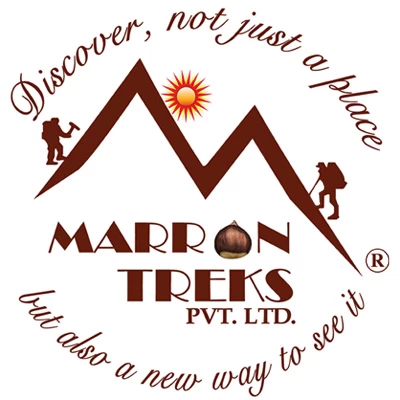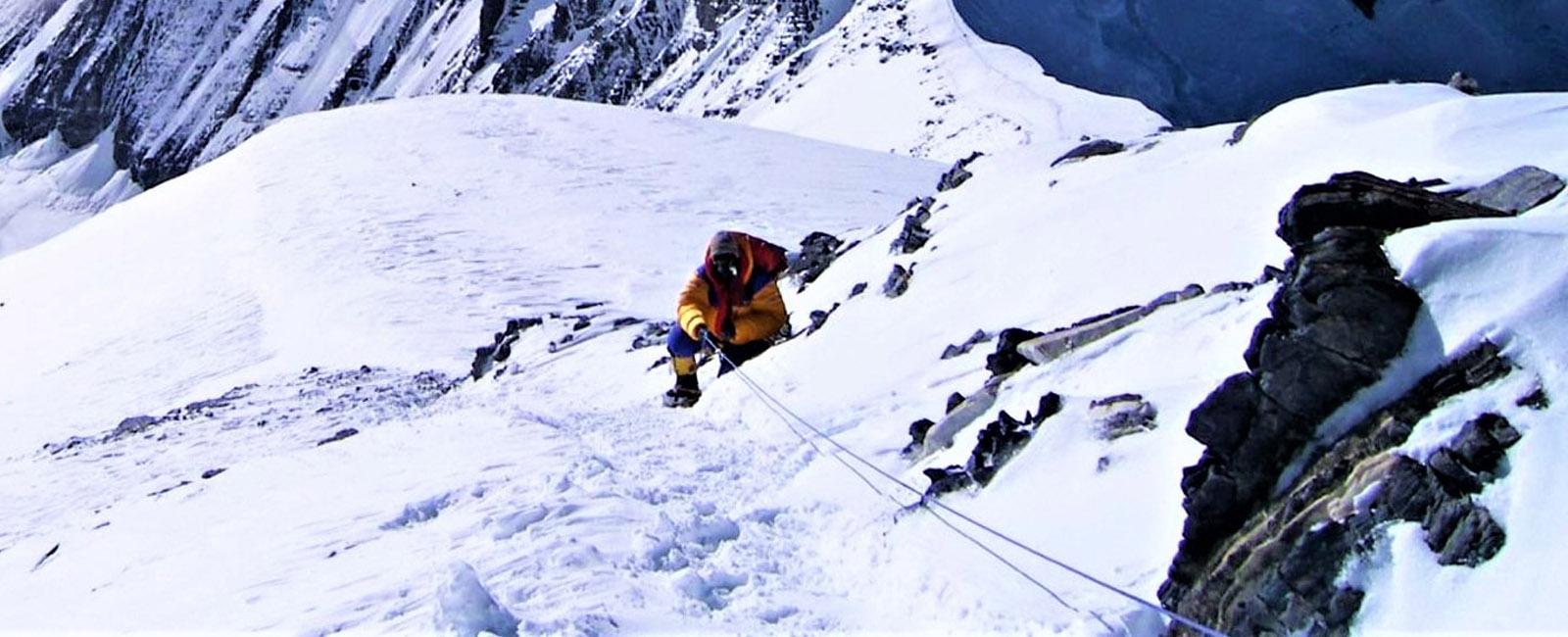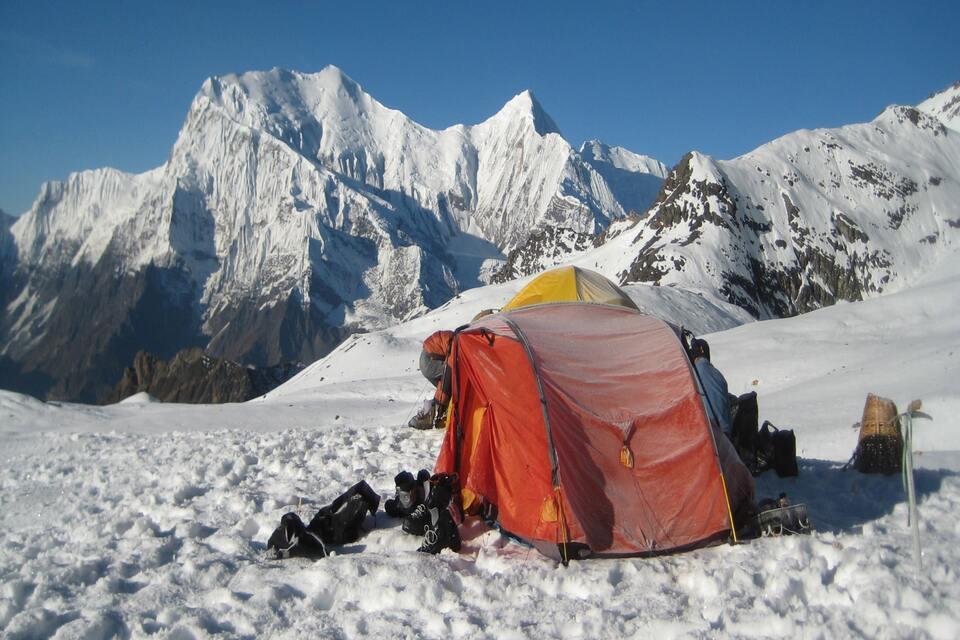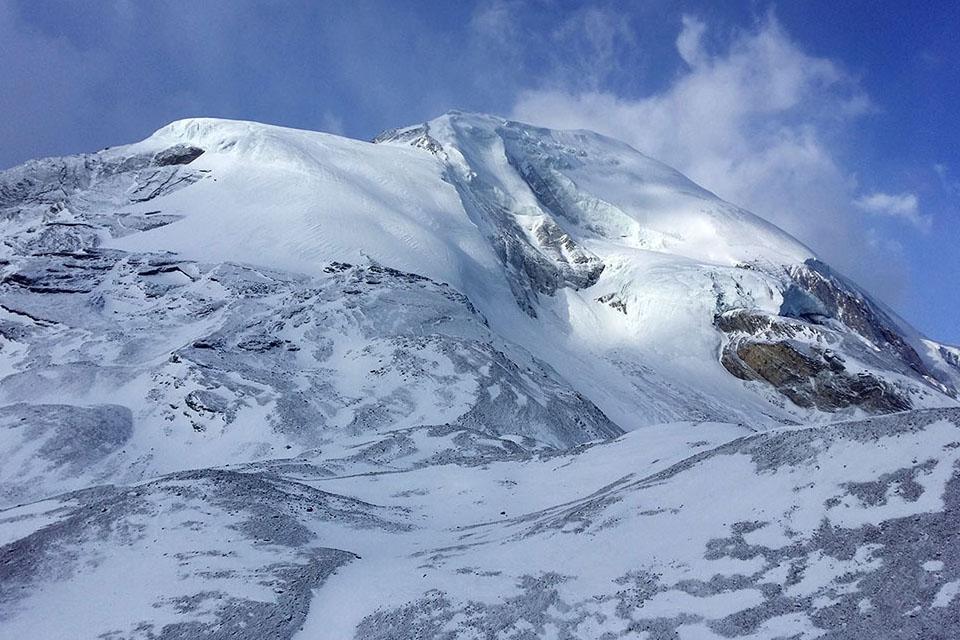Naya Kanga Peak Climbing
Trip at a Glance
Naya Kanga Peak, also known as Ganja La Chuli, is a beautiful peak located in the Langtang region of Nepal. Standing at an altitude of 5,844 meters, Naya Kanga is one of the best peaks for novice climbers to hone their climbing skills. Naya kanga peak climbing difficulty is considered" slightly difficult" because of the significant snow slopes that provide the obstacles and the ascent to the magnificent ridged peak of Naya Kanga.
Naya Kanga Peak is situated on the southern range of the stunning Langtang Valley inside Langtang national park. The Langtang Valley extends all the way to the Tibet border so a significant cultural influence is seen here. The lower range of 5–6000m peaks is located to the south and peaks of roughly 6500m to the north in the Langtang Valley. The southern range includes Naya Kanga.
The summit views from Naya Kanga Peak are stunning encircled by majestic breathtaking mountains in Tibet and Nepal. Towards the north almost all the peaks of the Lantang massive can be seen that includes Langtang II (6596m) and Lirung (7246m). The north-east provides views of Shisapangma (8035m), Ganchenpo (6387m/ Tibet's only eight thousand meter peak), Langshisa Ri (6370m), and Pemthang Karpo Ri (6830m)
Naya Kanga Peak Highlights
- The shortest and most beginner-friendly climbing peak
- Stunning Views of Langtang Lirung (7,227m), Ganesh Himal (7,422m), Shishapangma (8,027m), Dorje Lakpa (6,966m)
- Visit ancient monasteries such as Kyanjin Gompa
- Trekking Through Langtang National Park
- Immersive Cultural Experience resembling Tibet
- Peak climbing adventure closer to Kathmandu
How difficult is Naya Kanga Peak climbing?
Naya Kanga Peak is a challenging but accomplishable mountaineering experience. Altitude is one of the factors that related to difficulty. The risk of altitude sickness is inevitable when one reaches 5,844 meters (19,173 feet) above sea level. So, a proper acclimatization must be done correctly. A carefully planned itinerary that includes rest days is crucial for a successful climb.
In technical aspects, although Naya Kanga is frequently referred to as a "trekking peak," it does have technical climbing components. Climbing Naya Kanga Peak includes crossing glaciers, climbing on snow and ice and the use of ropes, ice axes, and crampons. Therefore, it is quite helpful to have some prior expertise with basic mountaineering techniques.
There can be challenging and varied terrain, including rocky areas, moraines formed by glaciers with steep slopes of ice and snow. The weather is another factor where the Himalayan weather being unpredictable. Climbers need to be ready for unexpected temperature swings, strong winds or possible snowfall. High levels of physical stamina and endurance are necessary for the ascent. It is strongly advised to have prior expertise with both high-altitude trekking and basic climbing skills.
For success and safety, experienced and trained guides are key components. It is also necessary to have the proper mountaineering gears. Naya Kanga Peak climbing calls for a combination of proper acclimatization, basic climbing skills, and physical fitness. For climbers with the right experience, Naya Kanga peak can be conquered with careful planning and experienced guide.
Guided Naya Kanga Peak climb from Kathmandu
Climbing Naya Kanga Peak from Kathmandu requires a planned itinerary, usually put together by experienced trekking and mountaineering agencies. The trip starts in Nepal's capital, Kathmandu. You will land at Tribhuvan International Airport and your travel agent will arrange hotel rooms in Kathmandu and airport pickups. Final preparations, including climbing permit and checking your equipment, will be completed in Kathmandu.
Trekking across the picturesque Langtang region is the route to Naya Kanga. The trip from Kathmandu to Syabrubesi, the entrance to the Langtang Valley, is where the trek begins. Trekking through traditional Tamang villages and diverse landscapes is part of the Langtang Valley trail. Trekking through alpine meadows, rhododendron woodlands, and lush forests, you'll progressively reach higher elevations. To allow for acclimatization, the trek usually includes stops at villages like Kyangjin Gompa, Langtang Village, and Lama Hotel.
The trail leads to the Naya Kanga base camp from Kyangjin Gompa. Using mountaineering gear is necessary for the summit attempt, which involves climbing over snow and ice. The ascent will be led by experienced climbing guides who will ensure safety and offer technical support.
There are panoramic views of the Langtang Himalaya range from the summit.
You will trek back down the Langtang Valley after returning to base camp after reaching the top of Naya Kanga. The drive back to Kathmandu marks the end of the trip.
Naya Kanga Peak climbing safety and preparation tips
Although climbing Naya Kanga Peak is a rewarding experience, it requires careful planning and a strong emphasis on safety. While preparing for the trek and climb, for training and physical fitness, do aerobic activities on a regular basis, such as cycling, swimming, and running. Weighted backpack hikes can be used to replicate trekking conditions. Use lunges, step-ups, and squats to strengthen your legs. For stability, strengthen your core muscles. To acclimatize your body, train at higher altitudes if at all possible. You should pack layered apparel, as well as outerwear that is windproof and waterproof and with warm sleeping bag.
While on the trek and climb, ascend gradually so that your body can adjust to the altitude gain. Your itinerary should include rest days for proper acclimatization. Don’t let yourself dehydrate and drink plenty of water. Stay away from alcohol and caffeine. Recognize the signs of altitude sickness, such as headache, nausea, and lightheadedness. If symptoms worsen, descend.
You should maintain a positive mindset and don't rush the climb. It’s a team work so support your team. For safety precautions you should always follow guide’s instructions and listen to guide instructions.
Naya Kanga Peak Climbing Permits
When planning to climb Naya Kanga Peak in Nepal, it's important to understand the necessary permits and regulations. You will require Naya Kanga Peak Climbing Permit. The Nepal Mountaineering Association (NMA) is the organization that issues this permit. The climbing season (spring, autumn, or summer/winter) affects the cost of this permit.
Another permit is Langtang National Park Permit is required because Naya Kanga is situated inside Langtang National Park. The purpose of this permit is to enter the national park region. Also Trekkers' Information Management System (TIMS) Card. Trekkers are tracked and their safety is ensured by the TIMS card. If required, it supports search and rescue operations.
It is highly advised that you plan your climb through a reputable Nepali trekking agency. They will manage the process of obtaining permits and offer a good assistance.
Naya Kanga Peak Climbing Permits Price
1) Langtang National Park permit fee for foreigners: NPR 3,000 (Approx. USD22)
2) Trekking Information Management System (TIMS) card permit: NPR 2000 (Approx. USD15)
3) Royalty for Foreign climbers for Naya Kanga peak (Ganja La Chuli) (per person in US dollar)
Spring (March-April-May) USD250
Autumn (Sept-Oct-Nov) USD125
Winter (Dec-Jan-Feb) USD70
Summer June-July-Aug) USD70
4) Garbage deposit USD500 (Refundable)
Itinerary
Day 01: Arrival in Kathmandu (1400m)
Day 02: In Kathmandu - Climbing Permit Preparation
Day 03: Drive from Kathmandu (1400m) to Syabrubesi (1450m/8–9 hrs)
Day 04: Trek from Syabrubesi (1450m) to Lama Hotel (2470m)
Day 05: Trek from Lama Hotel (2470m) to Langtang Village (3330m)
Day 06: Trek from Langtang Village (3330m) to Kyanjin Gompa (3870m)
Day 07: In Kyanjin Gompa (3870m) – Rest/ Acclimatization
Day 08: Trek from Kyanjin Gompa (3870m) to Naya Kang Base Camp (4400m)
Day 09: Trek from Naya Kang Base Camp (4400m) to High Camp (5000m)
Day 10:Ascend from High Camp (5000m) to Summit (5844m) & descend to Naya Kanga Base Camp (4400m)
Day 11: Trek from Base Camp (4400m) to Langtang Village (3330m) via Kyanjin Gompa (3870m)
Day 12: Trek from Langtang Village (3330m) to Lama Hotel (2470m)
Day 13: Trek from Lama Hotel (2470m) to Syabrubensi (1450m)
Day 14: Drive from Syabrubensi (1450m) to Kathmandu (1400m)
Day 15: Final Departure
Arrive in Kathmandu and one of our representatives will receive you and transfer you to your hotel in Kathmandu. The rest of the time is free to explore the city or you can simply rest at your hotel if you are jet lagged and get ready for an amazing Himalayan trek/climb.
Our office team and climbing guide will meet you at the hotel and provide you further details regarding the trip completing your trip's paperwork and permission and conduct a last inspection of your climbing gear. You will have the opportunity to purchase any extra gear you may require today. Another option is to take a sightseeing tour of the Kathmandu Valley.
Early drive from Kathmandu, enjoying a scenic route through winding roads, terraced fields, and lush green hills. The road passes through small towns and villages, witnessing rural Nepali life. En route, catch glimpses of Ganesh Himal and other snow-capped peaks.
Today your trek begins crossing the Bhote Koshi River via a suspension bridge and ascend gradually alongside the Langtang River. The trail passes through dense forests of oak, rhododendron, and bamboo. Occasionally spot wildlife such as red pandas, monkeys, and birds. Reach Lama Hotel, a tranquil spot surrounded by woods
The trail ascends through forests, opening up to views of snow-capped peaks. You will pass the village of Ghoda Tabela (Horse Stable), where you can stop for tea and enjoy panoramic views. The trail continues through yak pastures and scattered Tamang villages before reaching Langtang Village, rebuilt after the 2015 earthquake.
Today is a short trek that leads through yak pastures, mani walls, and chortens witnessing majestic mountain views, including Langtang Lirung (7,227m) and Dorje Lakpa (6,966m). Arrive at Kyanjin Gompa, home to ancient monasteries and a cheese factory.
Rest day at Kyanjin Gompa. You can take short hikes to acclimatize, such as ascending to Kyanjin Ri (4,773m) or Tserko Ri (4,984m) for spectacular panoramic views of the Langtang range. Alternatively, explore the local monastery and yak cheese factory.
The trail passes through alpine meadows and rugged terrain to Naya Kang Base Camp. The route offers incredible views of Langtang Lirung and the surrounding peaks. At Base Camp, set up your tents and prepare for the summit.
The trail becomes steeper, with snow and ice witnessing stunning vistas of towering peaks and glacial valleys. Spend the night at High Camp, acclimatizing and preparing for the summit push.
Start early (pre-dawn) for the summit attempt useing ropes and crampons to ascend the icy slope to Naya Kang’s summit. From the top, enjoy a 360° view of Langtang Lirung, Ganesh Himal, Shisapangma, Langshisa Ri, Pemthang Karpo Ri and the Tibetan peak ‘Ganchenpo’. Descend cautiously to Base Camp for rest.
You will retrace the same route through Kyanjin Gompa and enjoy one last look at the stunning mountain vistas before descending to Langtang Village.
The trail descends through forests and along the river, passing yak pastures and small villages. Spot wildlife and enjoy serene surroundings as you return to Lama Hotel.
The final day of trekking, you will descend through lush forests and across rivers to Syabrubesi. Celebrate completing the trek and Himalaya peak climbing upon arrival in Syabrubesi.
Take a scenic drive back to Kathmandu, reflecting on your trek and summit adventure. Arrive in the city and check into your hotel.
Today is your final day in Nepal. A representative of Marron Treks will escort you to the Tribhuvan International Airport, three hours to your flight schedule. Have a safe flight back home!
What is included?
- Airport pick-up and drop services.
- Hotel accommodations in Kathmandu with breakfast on Twin Share Basis.
- Kathmandu/Syabrubesi/Kathmandu drive by private vehicle.
- All trekking accommodations with Breakfast/Lunch/Dinner at local lodges & tents on twin-sharing basis.
- Experienced government-licensed climbing guide & porters (1 porter for two people) including their food, accommodation, & salary.
- A comprehensive medical kit (will be carried by the trekking guide)
- Group climbing gear like climbing rope, ice screws, snow bars etc.
- All camping equipment required during the climb (sleeping tents/mattresses, kitchen tent, kitchen equipment).
- Four seasonal sleeping bags and duffel bags (to be returned after trip completion)
- Personal insurance for climbing/trek crew.
- Langtang Conservation entry permit & TIMS Card.
- Naya Kanga Peak Climbing Permit.
- Farewell dinner with Nepalese cultural program.
- All government and local taxes.
What is not included?
- International airfares.
- Nepal entry visa fee – Visa can be obtained upon your arrival at the Tribhuvan International Airport in Kathmandu. (USD30 for 15 days)
- Lunch & dinner in Kathmandu.
- Personal travel insurance.
- Emergency rescue evacuation (to be covered by the client's travel insurance).
- Other expenses of a personal nature (phone calls, laundry, battery recharge, bottle or boiled water, hot shower etc.)
- Personal climbing gear.
- Bar bills, alcoholic drinks & beverages.
- Garbage deposit fees (refundable).
- Tips for guides and porters (Tipping is expected).
Trip Info
Accommodation
While you are in Kathmandu, we opt to accommodate you in 4- or 5-star hotels like Hotel Royal Singhi (4-star), Hotel Manaslu (4-star), Radisson (5-star), Yak & Yeti (5-star), or similar. During the trek, you will be accommodated in a local mountain lodge, better known as Tea House. These lodges and teahouses provide good services and are equipped with basic amenities. During the climb, we will provide top-quality camping equipment, including premium member tents, a spacious dining tent, and a hygienic toilet tent. We will endeavor to provide you with the best accommodation available along the route so that you get a good night’s rest in a hygienic milieu.
Meals
We never compromise the quality of food or the health of the trekkers as well as the crew members. Generally, we opt for the fresh and nutritional local community food available. You could make your delicious pick from an array of traditional foods like Sweet potatoes, buckwheat barley, etc. This way, you could not only get a real sense of the local culture and life patterns but also contribute to promoting the locally available resources of organic food and beverages. Besides, a wide range of Continental, Chinese, Italian and Indian cuisines like Pizza, Spaghetti, French Fries, Soups, Breads, Masala curry, etc. are also available in the restaurants for your retreat. During the camping, our experienced cook will prepare nutritious and hygienic meals for you.
Acclimatization
Altitude sickness is a serious risk while trekking in the Himalayas. It's important to acclimatize properly by spending a few days at lower altitudes before heading higher. By spending time at lower altitudes before pushing higher, your body has time to adjust. Our trekking packages have enough acclimatization days planned where you'll be spending a day or two at lower altitudes, allowing your body to adjust to the increasing altitude.
Electricity & drinking water
For an additional cost, you can use the electricity in all tea houses and lodges to recharge your batteries. The lodges have packaged mineral water for sale, or you can fill your bottle with boiling water. To make water drinkable, you can use water purification tablets too. But, due to hygienic issues, you should avoid drinking water from taps, rivers, or wells in trekking areas.
Communication
At high elevations, phone calls are the only means of connection. Our office in Kathmandu is in constant communication with your trek guide. In Kathmandu, you can purchase a local sim card for communication purposes. At high elevations, the mobile signal might not be as strong, though.
Luggage
Our porters are paired with one trekker for every two hikers, and one porter can safely carry 30 kg maximum weight. Therefore, we advise you to fill your duffle bag not more than 15 kg with your belongings. You may carry a small backpack with your valuables and informational documents. The things you are not taking along on the trek can be stored in a hotel in Kathmandu free of cost.
Typical Trek Day
Mostly your trek day starts with breakfast at 7-8 am, followed by a 3-4 hour morning trek. Lunch break is around an hour, then you continue trekking to your destination for the day. After reaching the teahouse lodge, you can relax, explore nearby areas, and enjoy dinner at 6-7 pm. Evenings involve socializing, a trek briefing, and leisure activities before bed.
Travel Insurance
It is advised that you arrange your travel insurance before leaving your homeland. The main thing is to make sure that your insurance covers you for both- medical and evacuation costs. Having travel insurance with you makes your trip secure and hassle-free.
Our Guides
Guides play a significant role during the trek. They are the ones who literally decipher the trekking codes for you so that you can actually connect with nature, culture and people along the way. We have helpful and dedicated trekking guides who are very well-versed in the culture, life patterns and every single detail pertaining to the trek region you are traveling in. Thus, in the company of our professional Sherpa guides, your trek becomes not only entertaining but also equally informative.
Porter and Staff Care
When it comes to high-altitude trekking, porters and staff members make up a pivot. Marron Treks ensures that all the porters and staff members going to high altitudes are provided with adequate clothing and equipment. All our field staff are covered by insurance.





